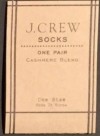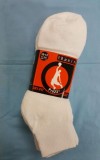The United States Patent and Trademark Office (USPTO) started the Post Registration Audit Program in November 2017. The program promotes the accuracy and integrity of the trademark register. See 37 C.F.R sections 2.161(b), 7.37(b).
Why is the USPTO auditing registrations?
Could my registration be audited?
What happens if my registration is audited?
Will I incur additional fees during the audit?
What happens if I incur fees during the audit, and don’t pay them?
What is "proof of use"?
What happens after I respond to the first office action?
What if I cannot provide proof of use for the audited goods or services?
How can I prevent a second office action from issuing?
Can I file a new Section 8 or 71 declaration instead of submitting a response?
Will I receive a second office action and what are the requirements?
What is the deadline for responding to a first or second office action?
What is the statutory filing period for filing a declaration of use?
What if I do not respond to a first or second office action?
What if I disagree with the audit examiner’s determination?
Could I receive a third office action?
What if I don't respond to the third office action?
How do I respond to the third office action?
How do I respond to an office action?
How do I petition the Director?
Proof of use examples
Program statistics
Why is the USPTO auditing registrations?
The USPTO audits registrations with required maintenance filings to help preserve the trademark register as a reliable reflection of trademarks in use in commerce. The trademark register in the United States is a use-based register. Registrations are entitled to be maintained only for goods or services for which the trademark is in use in commerce or for which temporary nonuse is excused due to special circumstances. Inaccurate or improper use claims in registration maintenance filings jeopardize the validity of your registration, may unnecessarily block future applications, and diminish the utility of the trademark register to provide notice of trademark rights to businesses and the public. Trademark owners submit one specimen per class with six and ten-year declarations of use filed pursuant to Trademark Act Section 8 or 71 to maintain their registration. If the USPTO audits your registration maintenance filing, you will be required to prove use of your trademark for additional goods and services in the registration. If you do not respond to the audit, your registration will be canceled. If you respond but do not provide proof of use for those goods or services, you will be required to delete them from the registration. In addition, you must pay a $250 deletion fee per class each time goods or services are removed, and possibly a $100 deficiency surcharge, or your entire registration will be canceled. Since it began as a pilot program, the audit program has allowed us to cancel or remove goods or services from registrations in more than fifty percent of audited registrations, resulting in a more accurate trademark register.
Could my registration be audited?
Random audits
Yes, if your registration meets these requirements:
- You timely filed a Section 8 or 71 declaration of use; and
- (a) Your registration includes at least one class with four or more goods or services.
For example, your registration covers purses, wallets, backpacks, luggage tags and suitcases (all Class 18).
OR
(b) Your registration includes at least two classes with two or more goods or services.
For example, your registration covers:
Purses and suitcases (Class 18)
Clothing, namely shirts, shorts, pants, coats, and hats (Class 25)
Retail clothing stores (Class 35).
Directed audits
Yes, if your registration meets these requirements:
- You timely filed a Section 8 or 71 declaration of use; and
- Your registration file or your post registration maintenance documents have characteristics that call into question whether you're really using your mark in commerce. This includes files where a specimen:
- Appears digitally altered; or
- Was made up of print outs from a specimen farm website
What happens if my registration is audited?
You will receive an office action from an audit examiner saying that your registration has been selected for audit. In a random audit, the office action will identify two additional goods or services for each audited class. In a directed audit, the office action will identify some or even all of the goods or services in the registration. You must submit proof of use for each identified good or service.
The office action will also identify any issues with the declaration. You must address all issues raised in the office action in your response. Audits are not conducted by staff within the USPTO’s Post Registration Unit (PRU), if you have questions about your office action direct them to the assigned audit examiner, not to PRU.
Will I incur additional fees during the audit?
Maybe. If at any point during the pendency of a Section 8 or 71 declaration of use you delete goods or services from the registration, you must pay a fee of $250 for each class in which you delete goods or services. 37 C.F.R. sections 2.161(c), 7.37(c). The fee is due each time you respond by deleting goods or services, even if you previously paid a fee for deleting goods or services in that same class.
In addition, when you delete goods or services from your declaration after you file it, this means that you didn’t accurately list the goods or services with which your trademark is used in commerce as required by the Trademark Act. 15 U.S.C. sections 1058(b)(1)(B), 1141k(b)(1)(B). This renders your declaration deficient, or not in compliance with the act. Section 1604.17 and 1613.17.
Whether you owe a deficiency surcharge is determined by the date when you filed your declaration and the date of your response correcting the deficiency by deleting goods or services. 15 U.S.C. sections 1058(c), 1141k(c); 37 C.F.R. section 2.164, 7.39(c). An office action will explain if a deficiency surcharge is required to correct the deficiency in your declaration; however, in some cases the date when you file your response determines if a surcharge is due.
If you do not delete goods or services from the registration while your Section 8 or 71 declaration is pending, and there are no other deficiencies in your declaration, no additional fee is due.
As illustrated in the examples and chart below, a deficiency surcharge is required when a deficiency in a Section 8 or 71 declaration is corrected in a period different from the period when the original declaration is filed.
Period 1
You file your declaration at the earliest possible date, beginning of the fifth year. You then respond to an office action before the sixth year begins. If you are deleting goods from one class, you are required to pay a $250 fee to delete the goods, but no deficiency surcharge would be due.
Period 1 and period 2
You file your declaration during the fifth year, but you respond to the office action within the six-month grace period that immediately follows the regular statutory period by deleting goods from a class. You must pay both the $250 fee to delete the goods and a $100 deficiency surcharge.
Period 2
You file your declaration at the beginning of the six month grace period and respond to an office action within the same six month grace period. If you are deleting goods from one class, you are required to pay a $250 fee to delete the goods, but no deficiency surcharge would be due.
Period 2 and 3
You file your declaration on the very last day of the six-month grace period. You then respond to an office action after the grace period has ended by deleting goods from a class. Both a $250 fee to delete the goods and a $100 deficiency surcharge are due.
| Regular statutory period (5th to 6th year and 9th to 10th year) | 6-month grace period | After grace period |
|---|---|---|
| Period 1 | Period 2 | Period 3 |
The best way to avoid incurring any fees is to delete any goods and services promptly if no longer in use between required maintenance filings. Then as you approach the statutory period for submitting your required maintenance filing, confirm that the trademark is in use with each good and service in the registration, and collect specimens and other proof of use. Any good or service that is not in use, and for which nonuse cannot be excused should be deleted from the registration as soon as possible.
What happens if I incur fees during the audit, and don’t pay them?
If you miscalculate the total fees due or forget to include them when responding to an audit office action, depending on how far along you are in the audit process, you’ll receive another office action telling you the amount still outstanding and providing you additional time to pay.
If it is late in the audit process, a petition to the Director may be required to submit the outstanding fees. If all fees aren’t paid when the audit concludes or you do not respond to an office action requiring fees, your entire registration will be canceled.
What is “proof of use”?
Proof of use is evidence that clearly shows how you are using your mark in commerce on the identified goods or in connection with the services in your registration.
Examples for goods:
- Photographs that show the mark on a tag or label affixed to the goods
- Hangtags or labels with the mark and the generic name of the actual goods on the tag or label and informational matter that typically appears on a tag or label in use in commerce for these types of goods
- Screenshots of webpages with the URL and access or print date that show the mark being used in connection with the goods at their point of sale
- Photographs of the mark on packaging where the goods are visible through the packaging
- Photographs of the mark on packaging where the packaging identifies the generic name of the goods included in the package.
Examples for services:
- Copies of brochures or flyers where the mark is used in advertising the services
- Photographs of the mark on retail store or restaurant signage
- Photographs of the mark on service vehicles
- Screenshots of webpages with the URL and access or print date where the mark is used in the actual sale or advertising of the services.
What happens after I respond to the first office action?
If your response meets all requirements, including proof of use, we will issue a notice of acceptance.
If your response does not include any acceptable proof of use for, or merely deletes the audited goods or services in a particular class, and goods or services remain in that class without acceptable proof of use, we will issue a second office action requiring proof of use for all of the remaining goods or services in that class for which you have not provided proof of use. Proof of use will not be required for any classes that either were not audited initially or that were audited and acceptable proof of use was provided in response to the first office action. In a directed audit, if the first office action required proof of use for all goods or services in your registration, the second office action will continue that requirement and address any new or unresolved issues. Additionally, if any goods or services are deleted in your response, you must pay a fee of $250 for each class with a deletion. 37 C.F.R. sections 2.161(c), 7.37(c). A deficiency surcharge of $100 may also be due. 37 C.F.R. section 2.164, 7.39(c). If your response does not include the required deletion fee and/or deficiency surcharge, the second office action will inform you of the total amount outstanding and will warn that your entire registration will be canceled if you do not pay the total due.
If your response only provides acceptable proof of use for some of the audited goods or services and/or you have requested deletion of the other goods or services that have been audited in a particular class, we will issue a second office action requiring proof of use for all of the remaining goods or services in the class for which you have not provided proof of use. In a directed audit, if the first office action required proof of use for all goods or services in the registration, the second office action will identify the goods or services for which acceptable proof of use was provided, any goods or services that you deleted, and continue the requirement for proof of use for any remaining goods or services. The second office action will also address any new or unresolved issues. As explained above, if you delete goods or services you must pay a fee of $250 for each class with a deletion, and a deficiency surcharge of $100 may also be required. 37 C.F.R. sections 2.161(c), 2.164, 7.37(c), 7.39(c).
What if I cannot provide proof of use for the audited goods or services?
If you cannot provide proof of use for the audited goods or services, your response must delete all goods or services for which you cannot provide proof of use, not just the ones selected for audit. If your response deletes the goods or services being audited and other goods or services remain in the audited class(es) for which you have not provided acceptable proof of use, we will issue a second office action requiring proof of use for all of the remaining goods or services in each audited class for which you have not provided proof of use. In a directed audit, if proof of use was required for all goods and services in the registration, the second office action will maintain that requirement for any goods or services without acceptable proof of use that weren’t deleted in your response.
Note that if you delete goods or services, you must also pay a fee of $250 for each class in which you delete goods or services while your Section 8 or 71 declaration of use is still pending. 37 C.F.R. sections 2.161(c), 7.37(c). This fee is required each time you delete goods or services, so it is important that you delete all goods or services for which you cannot provide proof of use in your first response rather than deleting them piecemeal in subsequent submissions.
How can I prevent a second office action from issuing?
If in response to the first office action, you submit proof of use for the audited goods or services and there are no other issues with your declaration, we will not issue a second action. However, if you need to delete the audited goods or services, then you can provide proof of use for all the remaining goods or services in the audited class(es), along with the deletion fee for each class of goods or services in which there are deletions and the deficiency surcharge, if required, to avoid a second office action.
Can I file a new Section 8 or 71 declaration instead of submitting a response?
Yes, if time remains in your statutory filing period. However, you will be required to pay new filing fees. Keep in mind that we selected your registration—not your declaration—for audit, so you will probably receive another office action when you file your second declaration. You should know that any goods or services deleted from your registration in your first declaration or in a prior response to an office action cannot be restored to your registration.
If you file another declaration, you should delete all goods and services that remain in your registration for which you cannot provide proof of use. This ensures that when we issue the first office action for your new declaration, you will be able to satisfy the proof of use requirements.
Will I receive a second office action and what are the requirements?
We will issue a second office action if your response does not include acceptable proof of use for any of the audited goods or services or merely deletes them. You must provide proof of use for any goods or services in the audited class(es) that you wish to keep in your registration, along with the deletion fee for each class with deletions and the deficiency surcharge, if required.
The second office action will require proof of use for all remaining goods or services in each audited class that you have not provided acceptable proof of use or deleted audited goods or services. In a directed audit, if you were required to provide proof of use for all goods and services, the second office action will continue the requirement for any goods or services remaining without acceptable proof of use.
The second office action generally will not require proof of use for goods or services in a class(es) that was not audited in the first office action or if acceptable proof of use was provided for that class(es). However, if your response or evidence raises questions about whether your mark is really in use, proof of use may be required for goods or services that weren’t audited in the first office action.
To respond to the second office action, you must provide proof of use for all remaining goods or services in the audited class(es) or delete them. If you delete goods or services, you must pay a fee for each class in which you delete goods or services. 37 C.F.R. sections 2.161(c), 7.37(c). This fee is required each time you delete goods or services, so it is important that you delete all goods or services for which you cannot provide proof of use in your first response and pay the deletion fee, instead of waiting until you receive a second office action requiring proof of use to delete them. A deficiency surcharge also may be required. 37 C.F.R. sections 2.164, 7.39(c).
If after reviewing your response, there are goods or services remaining in the audited class(es) for which you have not provided acceptable proof of use, we will issue a third and final action. It will advise you of the goods or services for which you have not provided acceptable proof of use, the total amount of any outstanding fees, and will advise that the entire registration will be canceled unless a timely (1) response is submitted, with all required fees, deleting the goods or services for which you have not provided acceptable proof of use in the audited class(es), or (2) petition to the Director is filed.
What is the deadline for responding to a first or second office action?
Your deadline is whichever is later:
- Six months after the issue date of your office action OR
- The end of the statutory filing period (not including grace period)
What is the statutory filing period for filing a declaration of use?
For six-year declarations of use, you can file as early as five years after your registration date, or as late as six years after your registration date. So, the statutory filing period is between five and six years after registration. It can be extended by six months if you pay the fee to file during the six-month grace period.
For ten-year declarations of use, you can file as early as nine years after your registration date, or as late as ten years after your registration date, and between every ninth and tenth year period that follows. So the statutory filing period is between nine and ten years after registration, and during the one year preceding every ten-year period that follows. It can be extended by six months if you pay the fee to file during the six-month grace period
What if I do not respond to a first or second office action?
If you do not respond to an office action by the deadline, your registration will be canceled in its entirety. 37 C.F.R. sections 2.163(c), 7.39(b).
If extraordinary circumstances prevented you from responding on time, you can file a Petition to Director requesting to waive the rule requiring a timely response. Examples of extraordinary circumstances may include:
- Impact from a hurricane or flood that prevented you from submitting a response on time.
- Prolonged illness or hospitalization that prevented you from submitting a response on time.
See TMEP section 1708 for more information.
What if I disagree with the post-registration examiner’s determination?
You can file a Petition to Director if you disagree with the refusal of your proof of use after the third office action has issued. There is a fee for a petition. The Director will review the record and determine whether the audit examiner made an error. If you have other proof of use that you would like considered, you may submit it with your petition. Be sure to identify which goods and services you believe are supported by that proof of use. If you owe any deletion fees and/or a deficiency surcharge, you’ll need to pay the amount outstanding, or your entire registration will be canceled.
Could I receive a third action?
Yes, if there are goods or services remaining in your registration in the audited class(es) without acceptable proof of use or you have not paid required fees for deleting goods or services or the deficiency surcharge, if due.
What if I don't respond to the third office action?
Even if you have provided acceptable proof of use for some audited goods and services, or paid some of the required fees, if you do not either respond to the third office action by addressing any remaining issues or filing a petition the Director, the entire registration will be canceled. 37 C.F.R. sections 2.165(b), 7.40(b).
How do I respond to a third office action?
You can either file a:
- Petition to Director no later than six months from the issue date of the office action to request review of the audit examiner's decision or to submit new proof of use evidence; or
- Response to the office action requesting to delete the goods or services with no acceptable proof of use and pay the deletion fee(s) and deficiency surcharge, if due, no later than six months from the issuance date of the office action. No new proof of use evidence should be submitted when responding to a third office action; the examiner will not consider any new evidence that is provided.
How do I respond to an office action?
Use the Response to Office Action for Post-Registration Matters form to submit your response. See our user guide to learn how to use the form.
To provide proof of use, attach an image file of your proof of use, and include the following declaration language, which is provided within the form:
The owner or holder was using the mark in commerce on or in connection with the goods and/or services identified in the registration for which use of the mark in commerce is claimed, as evidenced by the submitted proof of use, during the relevant period for filing the affidavit of use. The signatory being warned that willful false statements and the like are punishable by fine or imprisonment, or both, under 18 U.S.C. section 1001, and that such willful false statements and the like may jeopardize the validity of this submission, declares that the facts set forth above are true; all statements made of their own knowledge are true; and that all statements made on information and belief are believed to be true.
The declaration must be signed by an authorized person and include the name and title of the signer and the date. See TMEP 1604.08 (a) for Section 8 declarations or TMEP 1613.08 (a) for Section 71 declarations.
How do I petition the Director?
Use the TEAS Petition to Director form to submit your petition.
Your petition must include a statement of the facts, the relief you are requesting, any relevant evidence, a signed declaration to verify the information in your petition, and the required petition fee. See 37 C.F.R. section 2.20.
Proof of use examples
To enlarge or expand the examples, please select the magnifying glass located in the lower right hand corner of image.
| Evidence Description | Trademark/Service Mark | Goods/Services | Explanation | Evidence |
|---|---|---|---|---|
| Hangtag | J.CREW | Socks in Class 25 | This hangtag is acceptable, despite the absence of the queried goods, because it identifies the queried goods on the tag and includes information typically included on tags for these goods. | |
| Photograph of label affixed to the goods | REAL GOLD | Perfume in Class 3 | Photograph shows both the bottle with the trademark REAL GOLD on a label affixed to the goods and packaging where the trademark is on the box and the box identifies that it includes eau de perfume spray. Either one of these would be acceptable proof of use. | |
| Photograph of goods | NIKE | Footwear in Class 25 | Photograph shows the trademark NIKE on the goods. | |
| Catalog page | SAHAGIAN CANDY | Chewing gum, namely bubblegum in Class 30 | Catalog pages show the trademark in connection with the goods and includes information necessary to order in the nature of an order form. | |
| Webpage | PAKEMS | Footwear in Class 25 | Webpage includes 1) a picture of the goods, 2) the trademark PAKEMS appearing near the goods, 3) shopping cart and “shop footwear” indicating direct ordering via the web page and 4) URL and access date. | |
| Screenshot of Software | VORTEXT ANALYTICS | Computer software providing business management intelligence for others by gathering, filtering, indexing, analyzing, and reporting information from various data sources in Class 9 | The trademark is displayed within a screenshot of the software in operation. | |
| Photograph of packaging and generic name of goods | VECRUS | Non-woven textile fabrics in Class 24 | Photograph of packaging that includes the trademark, the type of goods and information typically included on packaging for the goods. | |
| Photograph of product packaging and goods | BUTCHER BOX | Meat in Class 29 | Shows the BUTCHER BOX trademark on the packaging, and the queried goods are visible inside the packaging. | |
| Tag | SUNDAVILLE | Live flowers in Class 31 | The plant tag identifies the goods on the tag, includes a picture of the goods and information typically found on tags for these goods. | |
| Brochure with photograph of goods | ENA | Dental composite materials in Class 5 | The brochure is acceptable because it includes a photograph of packaging for the queried goods bearing the ENA trademark along with information typical for packaging for these goods. In addition, the contents of the packaging are shown. | |
| Photograph of goods and packaging | Medical guidewires in Class 10 | The trademark appears on the packaging and the goods are visible through the packaging. | ||
| Label | PRO23 | Socks in Class 25 | Label bearing the trademark is affixed to the goods. | |
| Tag | HANDSEL MONDAY | Scarves in Class 25 | Tags bearing the trademark are affixed to the goods. | |
| Webpage | Charitable services, namely, organizing, conducting, and promoting volunteer programs and community services projects for litter abatement, the removal of invasive plant species, the planting of native plants, and the maintenance of such plantings in Class 35 | Advertising material displays the trademark and directly associates the trademark with the referenced services. The web page includes the URL and access/print date. | ||
| Webpage | 321 and Done | Providing information in the field of real estate in Class 36 | The web page displays the trademark 321 AND DONE, references the services, and includes the URL and access date. |
Digitally Created/Altered Proof of Use/Specimens are Unacceptable
Like digitally created or altered and mockup specimens discussed in Examination Guide 3-19, digitally created or altered and mockup proof of use is not acceptable
DISCLAIMER: References to particular trademarks, service marks, certification marks, products, services, companies, or organizations appearing on this page are for illustrative and educational purposes only and do not constitute or imply endorsement by the U.S. government, the U.S. Department of Commerce, the U.S. Patent and Trademark Office, or any other federal agency.


















